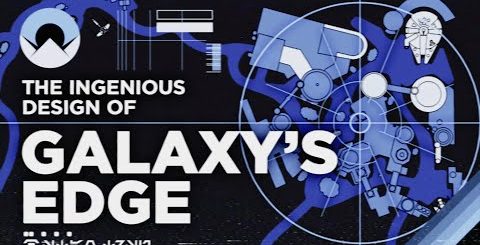The Strange Number System Used Only By Mathematicians
There’s a strange number system, featured in the work of a dozen Fields Medalists, that helps solve problems that are intractable with real numbers. Head to https://brilliant.org/veritasium to start your free 30-day trial, and the first 200 people get 20% off an annual premium subscription.
If you’re looking for a molecular modeling kit, try Snatoms – a kit I invented where the atoms snap together magnetically: https://snatoms.com
▀▀▀
References:
Koblitz, N. (2012). p-adic Numbers, p-adic Analysis, and Zeta-Functions (Vol. 58). Springer Science & Business Media.
Amazing intro to p-adic numbers here: https://youtu.be/3gyHKCDq1YA
Excellent series on p-adic numbers: https://youtu.be/VTtBDSWR1Ac
Great videos by James Tanton: @JamesTantonMath
▀▀▀
Special thanks to our Patreon supporters:
Emil Abu Milad, Tj Steyn, meg noah, Bernard McGee, KeyWestr, Amadeo Bee, TTST, Balkrishna Heroor, John H. Austin, Jr., john kiehl, Anton Ragin, Diffbot, Gnare, Dave Kircher, Burt Humburg, Blake Byers, Evgeny Skvortsov, Meekay, Bill Linder, Paul Peijzel, Josh Hibschman, Mac Malkawi, Juan Benet, Ubiquity Ventures, Richard Sundvall, Lee Redden, Stephen Wilcox, Marinus Kuivenhoven, Michael Krugman, Sam Lutfi.
▀▀▀
Written by Derek Muller and Alex Kontorovich
Edited by Trenton Oliver
Animated by Mike Radjabov, Ivy Tello, Fabio Albertelli and Jakub Misiek
Filmed by Derek Muller
Additional video/photos supplied by Getty Images & Pond5
Music from Epidemic Sound & Jonny Hyman
Produced by Derek Muller, Petr Lebedev, & Emily Zhang








I’m jealous that Derek gets a personal lecture from such an amazing mathematician.
I had the pleasure of meeting Alex Kontorovich in person several times by now, on conferences and a summer school. Had 2 or 3 chats with him. As far as I can tell, he really is like he comes across in these videos. And he gives the best talks, by a long shot, even when they’re intended for a professional audience and not for a general one like in this video. He has a way of conveying his enthusiasm that is truly unique and exhilarating. It fills you up with passion, like you have to go and prove some theorems, now! What an awesome guy, really.
@Lone Starr Now, he’ll be jealous of you too:)
An operation that only works in base 10 is not Mathematics it’s just Arithmetic.
I am a 60-year-old mathematician. You taught me more about the p-adics than I’ve learned in the last 40 years.
love derek
@Jokes with Mitochondria i was curious about ur username so clicked on ur profile. Wasnt disappointed haha
@Tylenol Sucks lmfao yeah their whole profile is a mood
srsly
6:20 Computer scientist here going “Oh my God, it’s Two’s complement, except in decimal. Ten’s complement arithmetic, except they’re being called 10-adic numbers because they’re 10 digits long instead of some power of 2 bytes’ worth of binary numbers.”
As a Maths graduate, I really appreciated this being taught so well. I remember learning them for the first time and they looked so counter-intutive at that time.
If you don’t mind me asking, what do people do after they graduate with a degree in mathematics. What will your work in the job be?
Why even bother with intuition in maths ? 😀
@KorigamiK Anything from math research to biology research to investment banking. The last pays more of course. You’ll find expertise in math is desired in all sorts of places. There’s even math used in the art world, like for image reconstruction.
@KorigamiK If you graduate with undergraduate maths degree you can do almost any job. More importantly you will have enough background for a master in many subjects. However, if you wish to do pure maths further you will end up in academia.
@Le YASEP Intuition is very important in mathematics. They are needed for understanding old mathematics and creating new mathematics.
This is weirdly similar to the way computers (typically) encode negative integers using 2’s complement notation, where …1111 (in binary) is how you represent -1. In computers this works because you run out of bits eventually and the carry gets thrown away. That’s functionally the same as the digits just going on forever, so computers are kind of using 2-adic integers. Neat!
I know that computers use negative numbers like that. But now I understand why it works.
that what I was thinking and I don’t get any of this actually – happy to see my unconcious getting it
yes, that works the same way (although on computer you are generally limited to 32 bits or 64 bits)
that’s what I said! this reminds me of the fast square root solution! its almost like a p-adic solution in constrained bit depth
Who would have thought that overflow errors exist in real life 😅
I’m a computer engineer. Along the duration of the video I started to relate this first to signed integer arithmetic (2’s complement). After that, I heard “Fermi” and I immediately knew this was going to be about modular arithmetic and discrete mathematics (both very useful for cryptography). And finally, fractals (Sierpinski), which is also quite useful in CS.
I have used all that math, but I didn’t realise it in the beginning until the video progressed. They taught me “just use this to calculate that”, but I really had no idea what these tools really were.
Yeah, it’s a bit shame though he didn’t mention that every modern computer uses 2-addics to save any number…
Fermat, I assume you mean?
I’m a master’s student in mathematics and p-adic numbers is more or less my specialty. It’s nice to look at it through fresh eyes because sometimes I forget how incredibly non-trivial these constructions are.
I don’t normally think of Veritasium as a math youtuber, but with videos on Newton’s calculation of pi, Godel’s incompleteness theorem, discrete Fourier transform, logistic map, Penrose tiling, Hilbert’s hotel paradox, and various probability puzzles, he definitely should be. I mean, this video alone (p-adic numbers, Fermat’s last theorem, Hensel lifting) would be an extremely ambitious topic even for a math-focused channel, and he and Alex Kontorovich did a great job with it!
absolutely
Waiting for 3B1B to pop up somewhere
Like half of his videos are math related lol
Next-up I want him to look at parker square.
Yeah…not math YouTuber to me, but a sleep helper YouTuber. 😂
These have been a pet favorite thing of mine since they made a brief appearance on numberphile in 2015. Freshman year of college we got to do an open presentation topic, and I chose p-adics, so seeing new resources pop up to make it more approachable and common knowledge fills me with warmth. This is an interesting approach! Starting with the magic and then sort of letting the details come out of the mechanics. I started by explaining how Cauchy completeness is used to define real numbers, and then the bit about the p-adic norm, and then onto all those magical properties like fractions and negatives and diophantine equations and FLT and openness and so on in decreasing specificity, as you would expect from a math lecture. Hopefully this inspires follow-up, if not from you then from fans. They’re really all introductory videos 😭
Thank you for not shying away from the nitty gritty calculations. Watching many of the pop science channels feels like eating a nothing burger. I don’t know what I’ve learnt by the end of it. This video was not like that. It introduced me to a whole new concept in enough detail that I feel confident going in and researching further.
Fascinating topic! I am so glad it got more traction.
Fun fact, some p-addic systems have really interesting properties. For example in 5-addic the number:
…04340423140223032431212
Multiplied by itself gives:
…4444444444
Which is a representation of -1 (add 1 to it and you get 0).
This means that 5-addic system has the sqrt(-1), the imaginary unit, in it!
This works whenever p is 1 mod 4
@QuantSpazar Ho so for 5, 13, 17 etc – addic number this can happen because those mod 4 = 1 ? Really great tidbit. I didn’t even though it would have been generalized already
@_ I proved that for fun, it’s very simple actually, you can check that if you have an expansion…a2a1a0 that squares to -1, by computing the first digit of the square, that a0 squares to -1 mod p, so that -1 is a square mod p (which is exactly when p is 1 mod4). Then to prove that it always work you can build (an) by induction